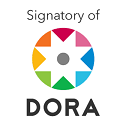Optimizing medicine supply through strategic procurement approaches in healthcare settings. Systematic review
Abstract
In the healthcare sector, the supply of medicines faces critical challenges related to shortages, high costs, and efficiency limitations. The objective is to synthesize the evidence on strategic procurement approaches to optimize pharmaceutical supply. A systematic review supported by PRISMA and PICOS criteria was developed, including 14 studies (2019-2025) from indexed databases. Strategic approaches such as AI, e-procurement, Lean Six Sigma, blockchain, and group purchasing were analyzed, evaluating their impact on availability, cost, quality, and efficiency. AI showed a greater impact on efficiency and cost reduction. E-procurement and Lean Six Sigma demonstrated cost effectiveness in limited contexts. Blockchain excelled in traceability despite its limited validation. Group purchasing reduced prices but with less operational flexibility. There is no single effective strategy; it depends on the context. Integrating technology, regulations, and organizational capabilities is essential for migrating to sustainable healthcare systems.
Downloads
References
Chen, C. N., Lai, C. H., Lu, G. W., Huang, C. C., Wu, L. J., Lin, H. C., & Chen, P. S. (2022). Applying Simulation Optimization to Minimize Drug Inventory Costs: A Study of a Case Outpatient Pharmacy. Healthcare, 10(556). https://doi.org/ 10.3390/healthcare10030556
Dubois, P., Lefouili, Y., & Straub, S. (2021). Pooled procurement of drugs in low and middle income countries. European Economic Review, 132(103655). https://doi.org/10.1016/j.euroecorev.2021.103655
European Medicines Agency (2023). Shortage survey 2023. EMA. https://n9.cl/6t36e
Fernández, M. I., Chanfreut, P., Jurado, I., & Maestre, J. M. (2020). A data-based model predictive decision support system for inventory management in hospitals. IEEE Journal of biomedical and health informatics, 25(6), 2227-2236. https://doi.org/10.1109/JBHI.2020.3039692
Gaynor et al. (2023). Blockchain Applications in the Pharmaceutical Industry. Blockchain in Healthcare Today, 7(298). https://doi.org/10.30953/bhty.v7.298
Instituto Nacional de Estadística y Geografía (2024). Encuesta Nacional de Salud 2023. INEGI. https://n9.cl/suhxu
Kader Akter, A. (2024). Optimizing hospital pharmacy inventory management systems: Challenges and Solutions. J. Pharm. Hosp. Pharm., 1(1), 07-10. https://doi.org/10.33545/30790522.2024.v1.i1.A.3
Mketo, S., Ng’elenge, H., & Kipilimba, T. (2023). Factors Affecting E-Procurement Adoption in Iringa Medical Store Department. International Journal of Economics and Business Management, 9(8), 36-46. https://doi.org/10.56201/ijebm.v9.no8.2023.pg36.46
Musamih, A., Salah, K., Jayaraman, R., Arshad, J., Debe, M., Al-Hammadi, Y., & Ellahham, S. (2021). A Blockchain-Based Approach for Drug Traceability in Healthcare Supply Chain. IEEE Access, 9, 9728-9743. https://doi.org/10.1109/ACCESS.2021.3049920
NHS England (2022). Medicines waste report. NHS England. https://n9.cl/d7hz3
Okuro Akinyi, L. & Samson Nyang’au, P. (2024). E-procurement practice and performance of sourcing of pharmaceutical drugs in level five public hospitals in Nairobi city county, Kenya. Journal of Social Sciences Management and Entrepreneurship 8(4), 43-53. https://n9.cl/8lpii0
Omorodion, O. O., & Osifo, S. J. (2020). Employee perceptions of the Electronic Procurement System (EPS) and rate of adoption of EPS by the Federal Public Hospitals in Edo State of Nigeria based on the diffusion of innovations theory. OUSL Journal, 15(2), 97-120. https://doi.org/10.4038/ouslj.v15i2.7479
Organización Panamericana de la Salud (OPS) (2023). Acceso a medicamentos en América Latina. OPS. https://n9.cl/c3vyty
Page, M. J., McKenzie, J. E., Bossuyt, P. M., Boutron, I., Hoffmann, T. C., Mulrow, C. D., ... & Moher, D. (2021). The PRISMA 2020 statement: An updated guideline for reporting systematic reviews. BMJ, 372(71). https://doi.org/10.1136/bmj.n71
Shen, Z. M., & Sun, Y. (2023). Strengthening supply chain resilience during COVID‐19: A case study of JD. com. Journal of operations management, 69(3), 359-383. https://doi.org/10.1002/joom.1161
Silva-Aravena, F., Ceballos-Fuentealba, I. & Álvarez-Miranda, E. (2020). Inventory Management at a Chilean Hospital Pharmacy: Case Study of a Dynamic Decision-Aid Tool. Mathematics, 8(11), 1962. https://doi.org/10.3390/math8111962
Svarch-Pérez, A. E., Molina-Gasman, A. M., Enríquez-Ríos, N., Olivares-Trejo M. P., Molina-Leza, J. F., & Alcocer-Varela, J. C. (2024). Eficiencia en las autorizaciones sanitarias de medicamentos por la Cofepris, 2019-2022. Salud Pública de México, 66(3), 296-303. https://n9.cl/6ojfk8
Tarek Zwaida, A., Pham, C., &Beauregard. Y. (2021). Optimization of Inventory Management to Prevent Drug Shortages in the Hospital Supply Chain. Appl. Sci., 11(2726). https://doi.org/10.3390/ app11062726
Uddin, M. (2021). Blockchain Medledger: Hyperledger fabric enabled drug traceability system for counterfeit drugs in pharmaceutical industry. International Journal of Pharmaceutics, 597, 120235. https://doi.org/10.1016/j.ijpharm.2021.120235
Uddin, M., Salad, K., Jayaraman, R., Pesic, S., & Ellahham, S. (2023). Blockchain for drug traceability: Architectures and open challenges. Health Informatics Journal, 27(2). https://doi.org/10.1177/14604582211011228
Xiaolu Wang, L., & Bin Zahur N. (2025). Procurement institutions and essential drug supply in lowand. Journal of Health Economics, 101, 102996. https://doi.org/10.1016/j.jhealeco.2025.102996
Copyright (c) 2025 Alex David Tenelema-Arias

This work is licensed under a Creative Commons Attribution-NonCommercial-ShareAlike 4.0 International License.
CC BY-NC-SA : Esta licencia permite a los reutilizadores distribuir, remezclar, adaptar y construir sobre el material en cualquier medio o formato solo con fines no comerciales, y solo siempre y cuando se dé la atribución al creador. Si remezcla, adapta o construye sobre el material, debe licenciar el material modificado bajo términos idénticos.
URL de OAI-PMH: https://iieakoinonia.org/ojs3/index.php/gestioep/oai














